While visiting friends in Stockholm, we went to see the Vasa, a warship that sank in Stockholm harbor on her maiden voyage in 1628.
The ship was found in 1956 and was found to be in such a good condition, that it was raised in 1961, 333 Years after her sinking and was able to float
the last few meters into the dry-dock all by herself! the ship and it's contents was then preserved over the next 18 years and is now one of the mayor
attractions in Stockholm.
I'm sorry for the quality of some of the pictures, but it is really dark in the museum and holding a camera motionless for up to 3 seconds is almost impossible.
This is what all the images could have looked like ;-)

but now on to the real ones.
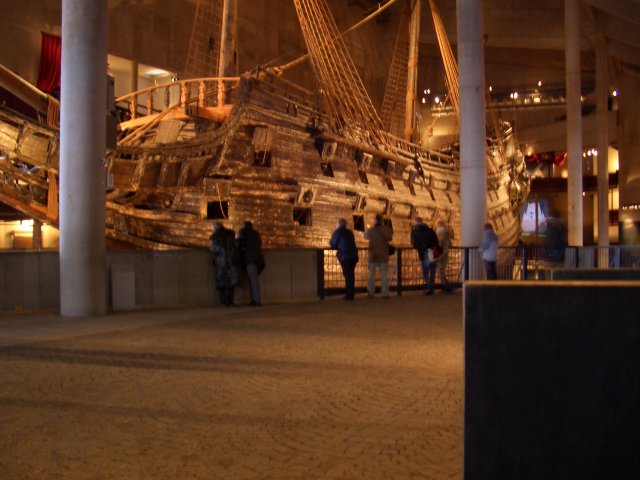
This is the Vasa. Most of the timber is original, including 2 of the masts. In later images one can see the difference between old and new. The new wood is lighter and
smoother than the original timbers.
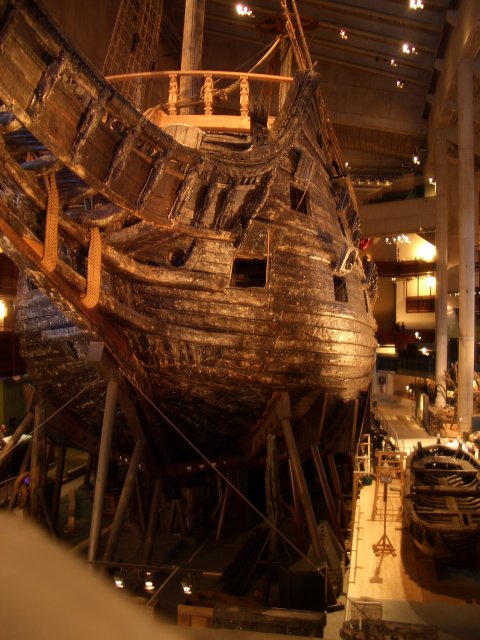
The Vasa from the front. Sadly the image does not bring across the shear scale of this ship.
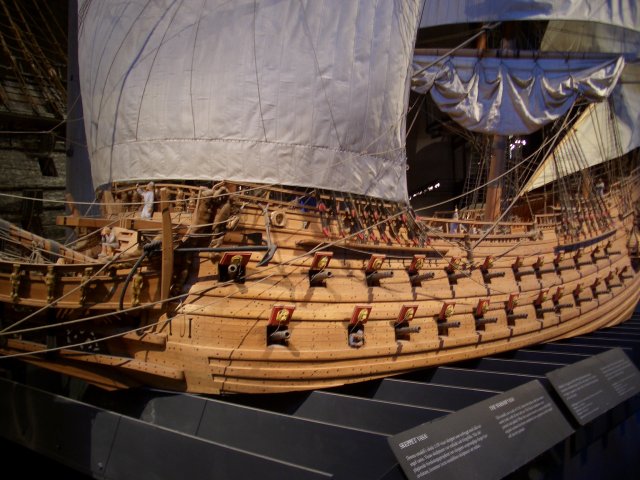
This is a 1:20 model of the Vasa as she looked when she sank.
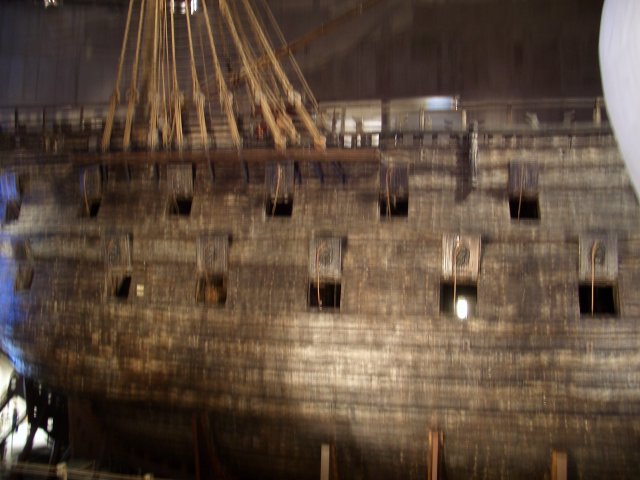
The Vasa's bow side on.
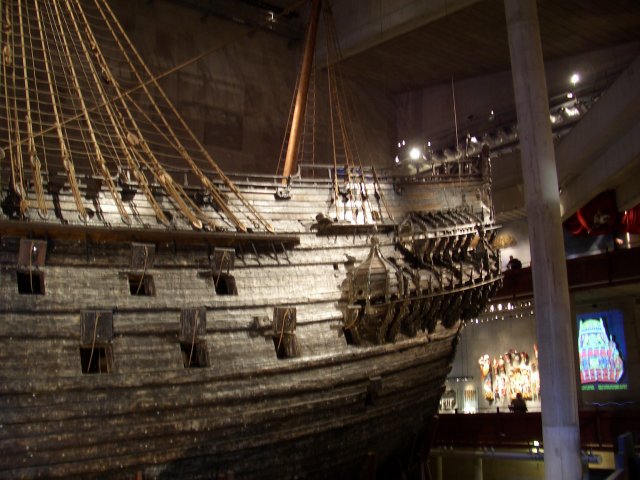
And the stern section from the same perspective.
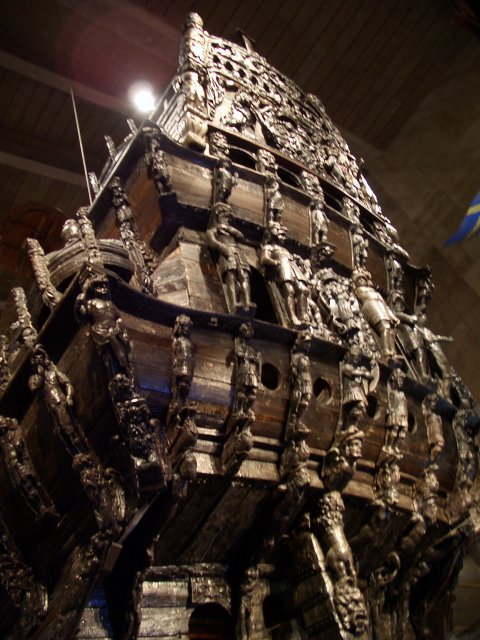
The stern of the Vasa is adorned with carvings. She was to be the pride of Sweden's navy. But all this decoration only helped to sink her. The ship sank because she
was top heavy. Originally designed to be smaller and lighter, the design was continually enlarged during the building, to the point where she was so top heavy and low in the
water, that during her maiden voyage, while still in the harbor, she was hit by a gust of wind, heeled over so that her lower gunports were submerged and sank.

The lower hull.

Once more a nice view of the stern.
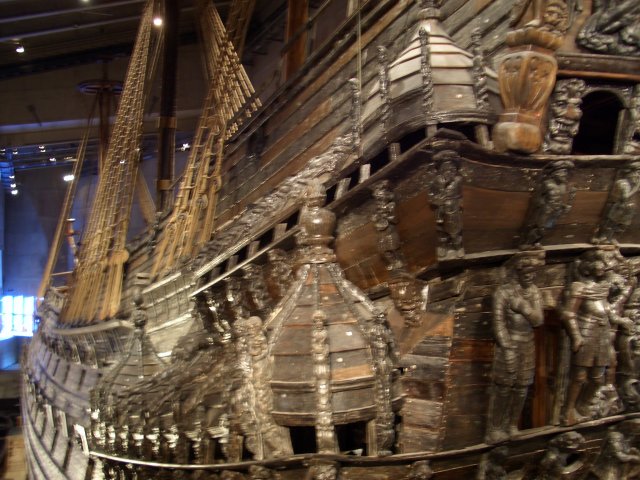
A view along the starboard side towards the bow.
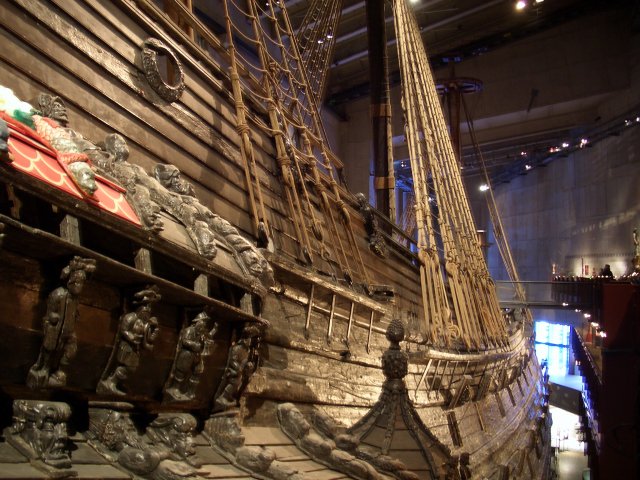
And here is the port side. The gantry has been partially painted to the original colouring. The whole ship was painted in bright colours.
The gantry was to be used by sharpshooters during battle.
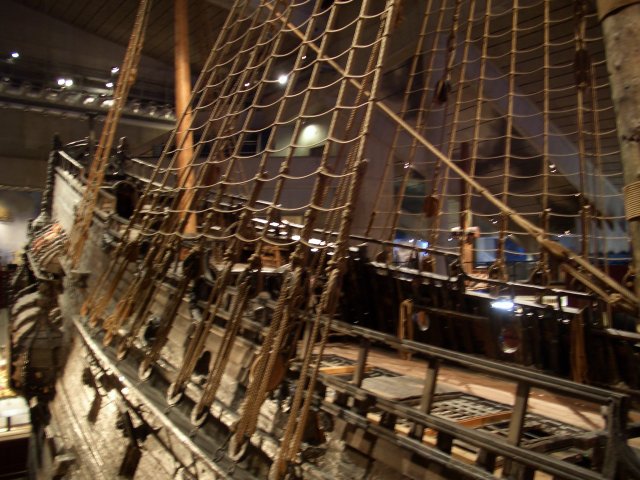
A view back along the port side. The spot of colour on the left, is the gantry seen in the previous image. The mizzen mast is a reconstruction.
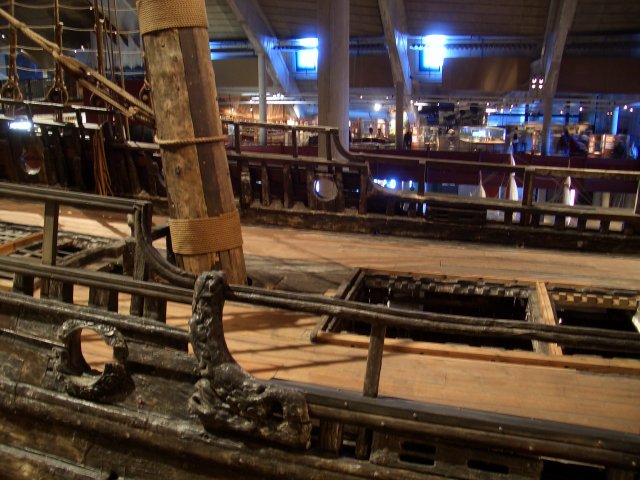
Here is the main mast and part of the hold. The main mast is original. Here one can also see the colour difference between the reconstruction and the
original timber.
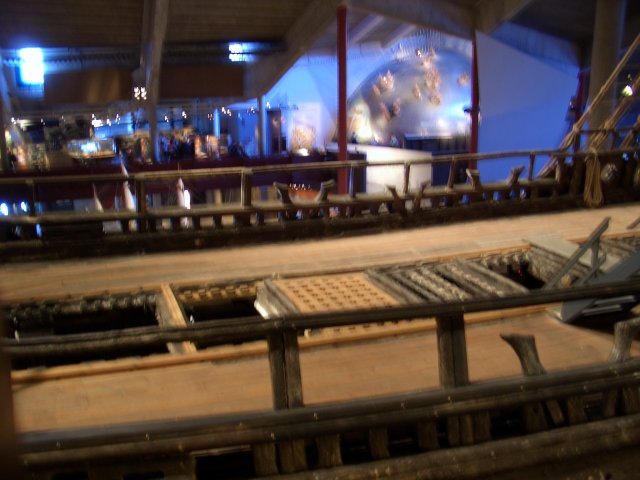
Here a view of the grating covering the lower decks.
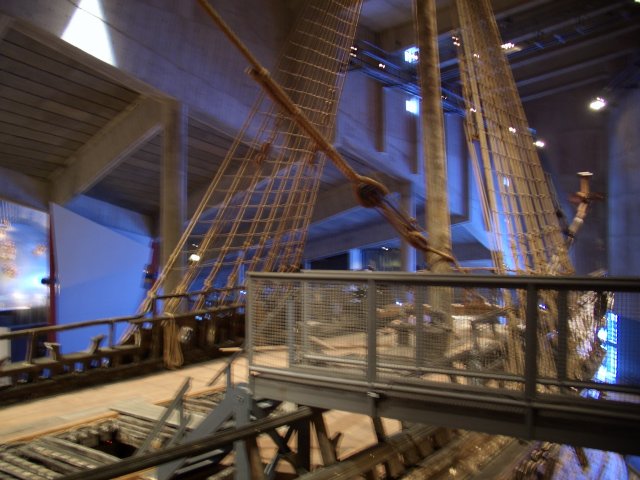
Here the view forward. The fore mast is again the original timber. The last 4 images are all taken from the same vantagepoint and give a general view of the layout of the main deck.
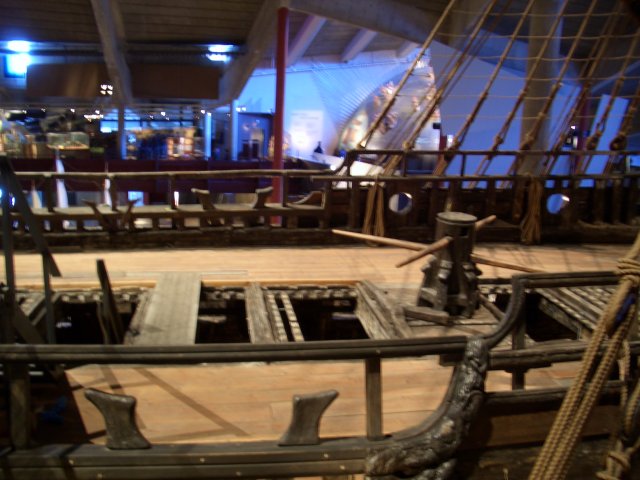
The capstan to haul up the anchors. It was turned by 18 sailors.
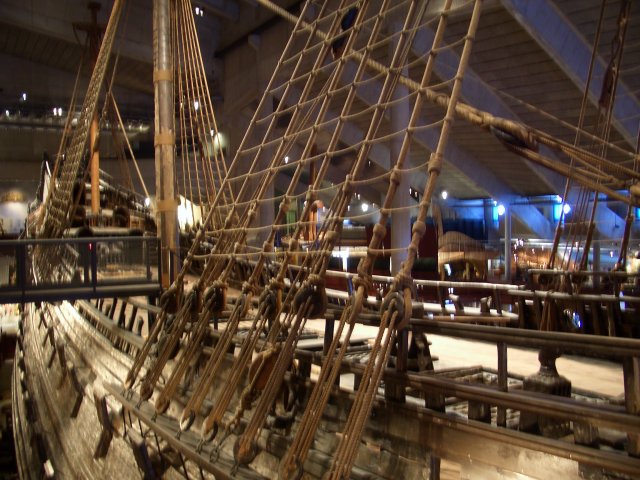
Here a view along the length of the ship.
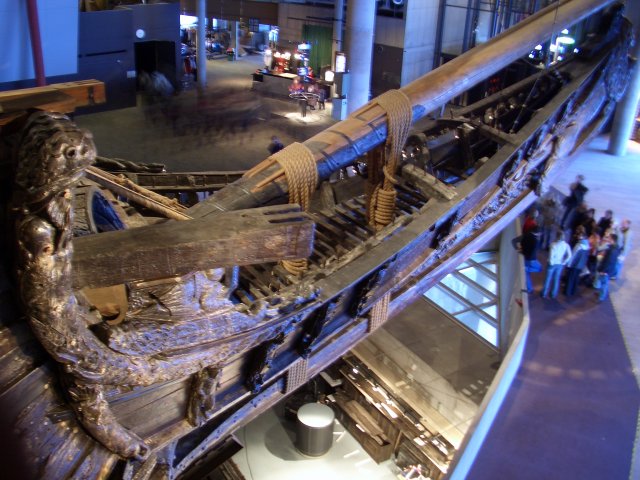

Here 2 images of the bowsprit.
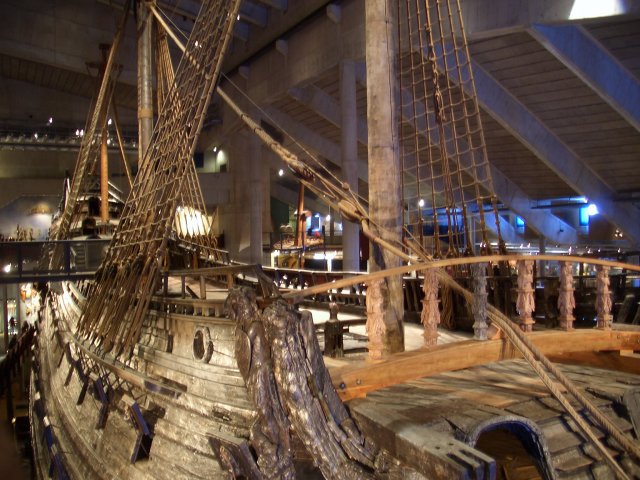
Here once again a view along the ship towards the stern. One can see nicely the colour difference of the reconstructed railing and the original parts of the ship.

An impressive view of the lower hull. It becomes obvious, that the lower gunports are situated much too low.
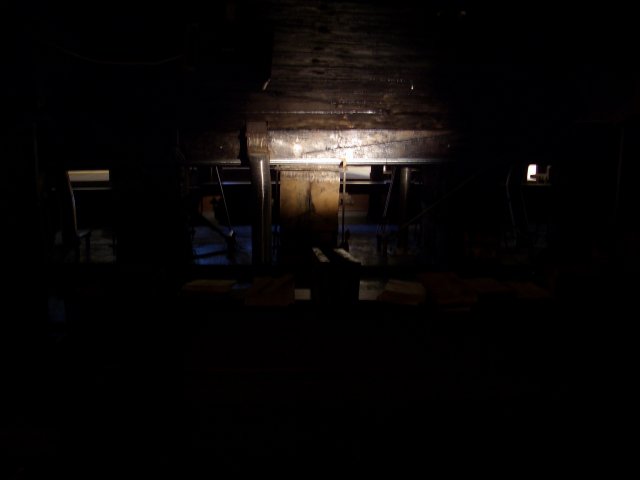
An image of the mighty keel of the Vasa. The keel is made up of 4 sections. Here one can see one of the joints.

And lastly the mighty stern of this magnificent ship, as seen from below the keel. Again, this photo fails to bring across the scale of this ancient man-of-war.
If you ever go to Stockholm, do not miss this attraction. It is worth it. There are also numerous exhibit showing the finds made inside the hull, such as a seaman chest,
and also exhibit detailing the life of the sailors in the 17th century, as well as various other topics of that period. A visit is an afternoon well spent.